Ukraine: What are Russia's possible attack routes?
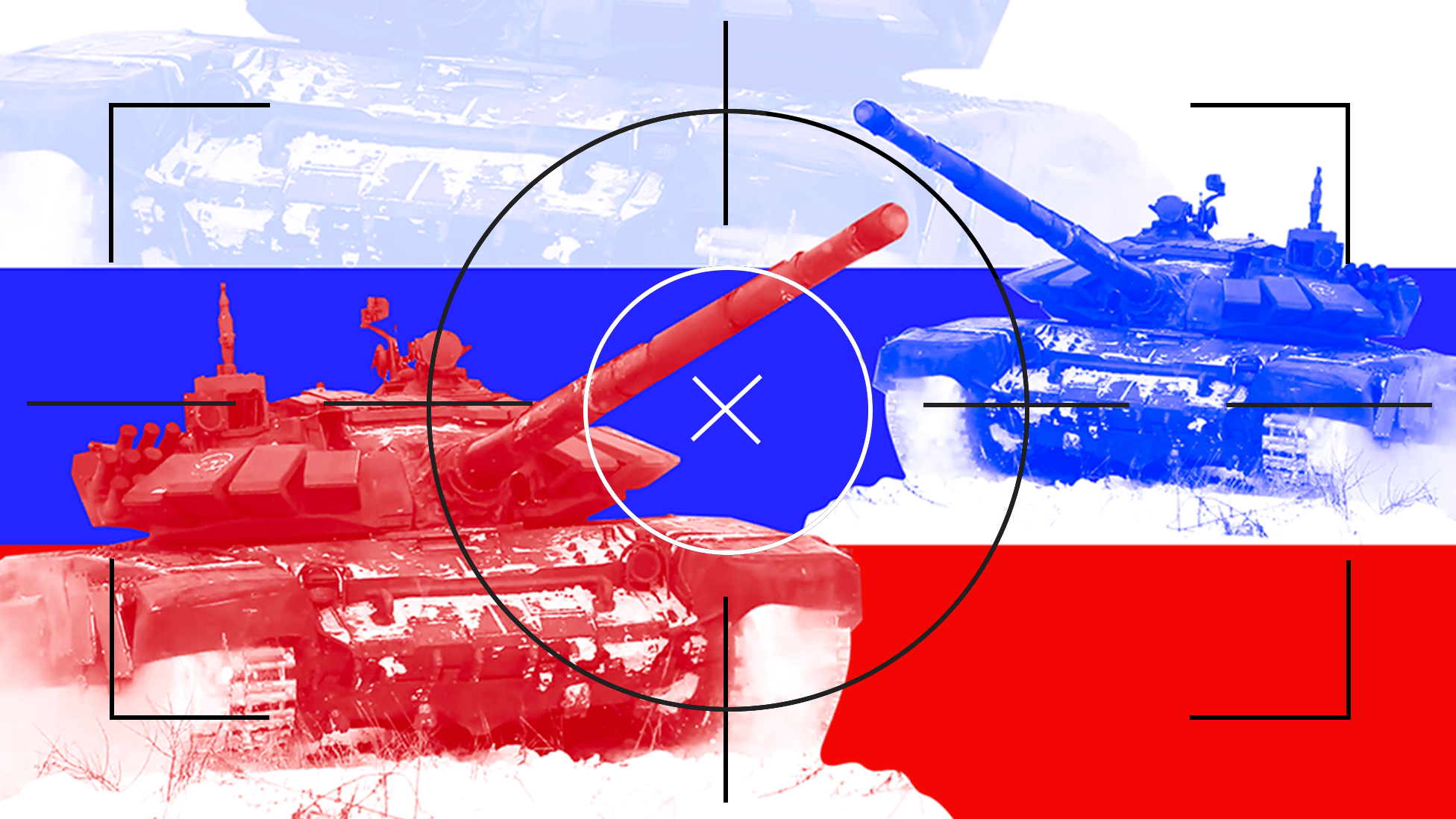
Moscow insists it is not planning to invade Ukraine, but the US says Russia could attack "at any time".
On Tuesday, UK Prime Minister Boris Johnson said: "We think they have a huge preparation ready to go.
"Everybody can see what the potential routes in are."
Military analysts agree that with about 150,000 troops near the Ukraine border, Russia has a range of options, should it decide to strike.
The Belarus option
If Russia's goal is full regime change in Ukraine, an assault from the north is highly possible, according to Michael Kofman, of the US-based CNA research organisation.

Russia has 30,000 troops in Belarus for joint military exercises, equipped with Iskander short-range missiles and a number of rocket launchers, as well as Su-25 ground attack aircraft and Su-35 fighters.
 Image source, Russian Defence Ministry
Image source, Russian Defence MinistryTo the east, just inside Russian territory, "Russia's entire 41st army is waiting on the border", says Mr Kofman.
An advance on Kyiv from Belarus may avoid the exclusion zone around the Chernobyl nuclear power plant.
On the Russian side, it could come from Novye Yurkovichi and Troebortno, according to Seth Jones, of the Center for Strategic and International Studies.
The route from Crimea
A breakout from Crimea is "almost certain" if Russia launches an invasion, according to Ben Barry, of the International Institute for Strategic Studies.
A ground war would involve "powerful armoured columns with concentrated artillery support to attempt to advance fast into the depth of Ukraine", according to Mr Barry.
A Russian advance towards Kyiv from Crimea could strand large numbers of Ukrainian troops east of the Dnieper river, he says.
With Russian forces to their west, east and north, and in Crimea, Ukrainian troops would be encircled.
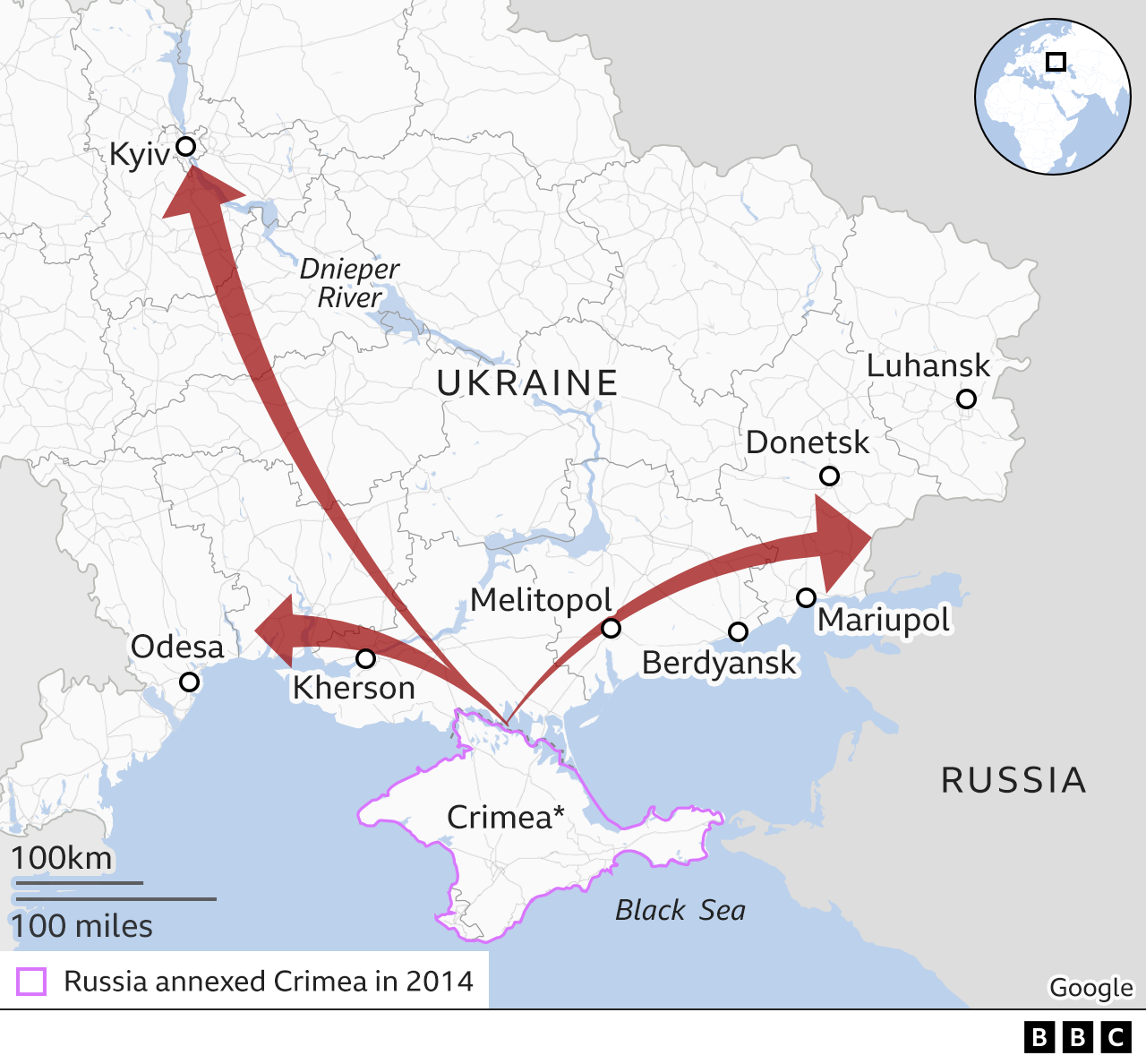
Russian troops may try to take Kherson and Odesa to their west and Melitopol and Mariupol to the east, creating a land bridge between Crimea and areas controlled by Russian separatists.
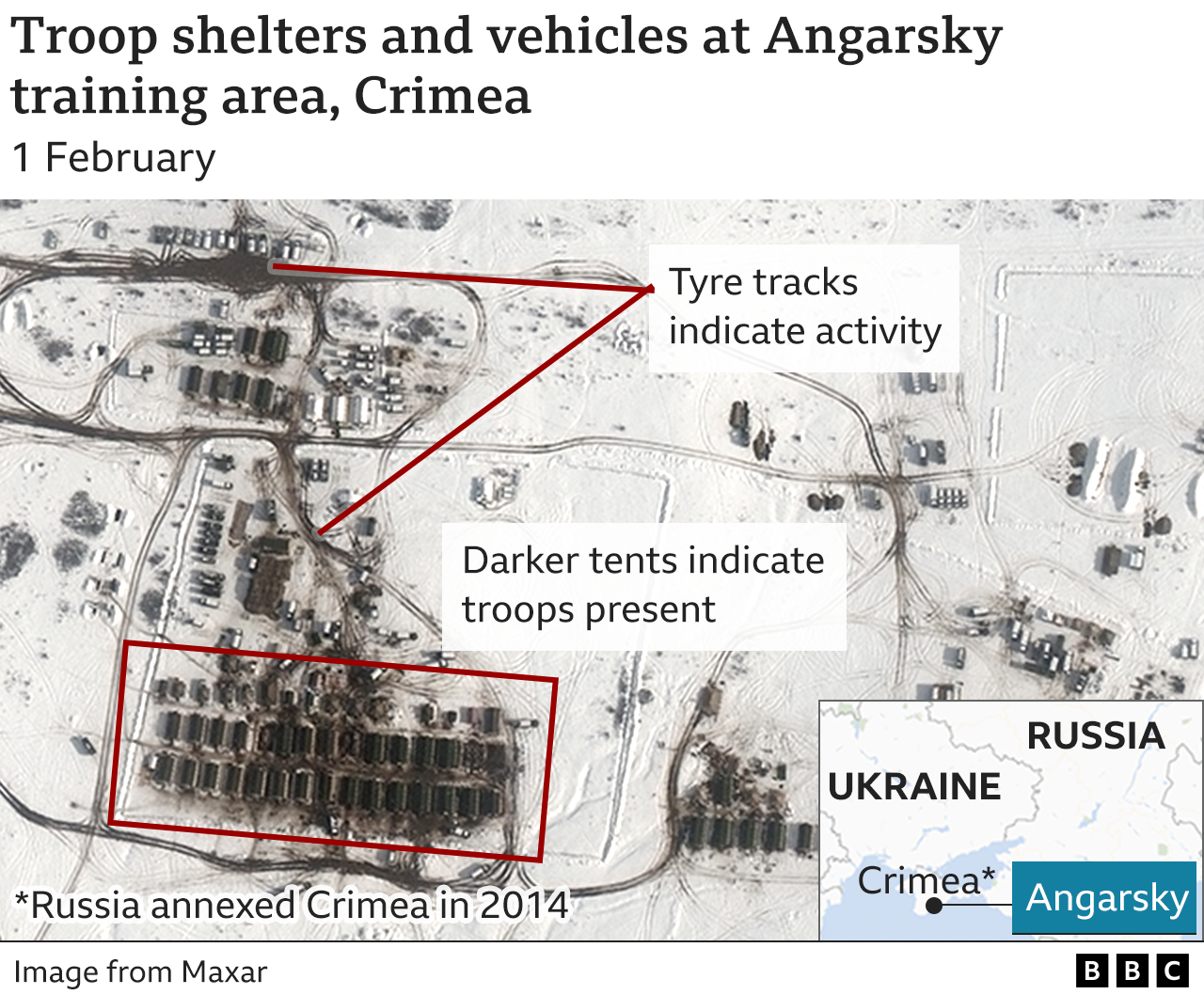
An advance could also involve naval forces currently in the Black Sea.
Russian landing ships in the area are capable of deploying personnel, armoured vehicles and main battle tanks.
Striking from the East
Russian-backed rebels seized big areas of two key regions, Luhansk and Donetsk, in 2014.
There are thought to be about 15,000 separatists in Luhansk and Donetsk, who may help a Russian advance.
Ukraine says the number is higher.
Russia has about 10,000 troops permanently stationed across the border in the Rostov region, and more have recently arrived.
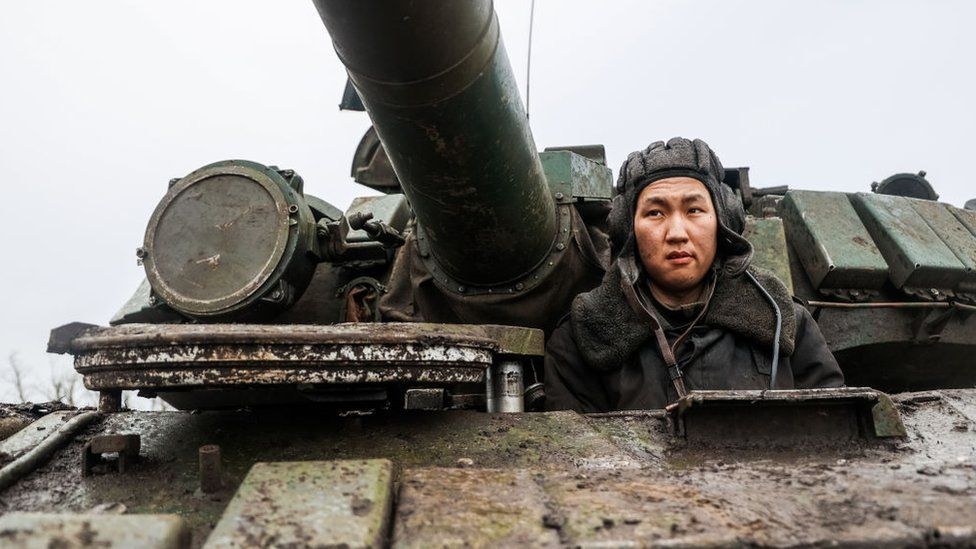 Image source, Getty Images
Image source, Getty ImagesIf Russia was to attack from the east, it is possible that troops could advance towards Crimea, creating a land bridge along Ukraine's south-east coast.
They could also move on Kharkiv from Belgorod, and on to Kremenchuk.
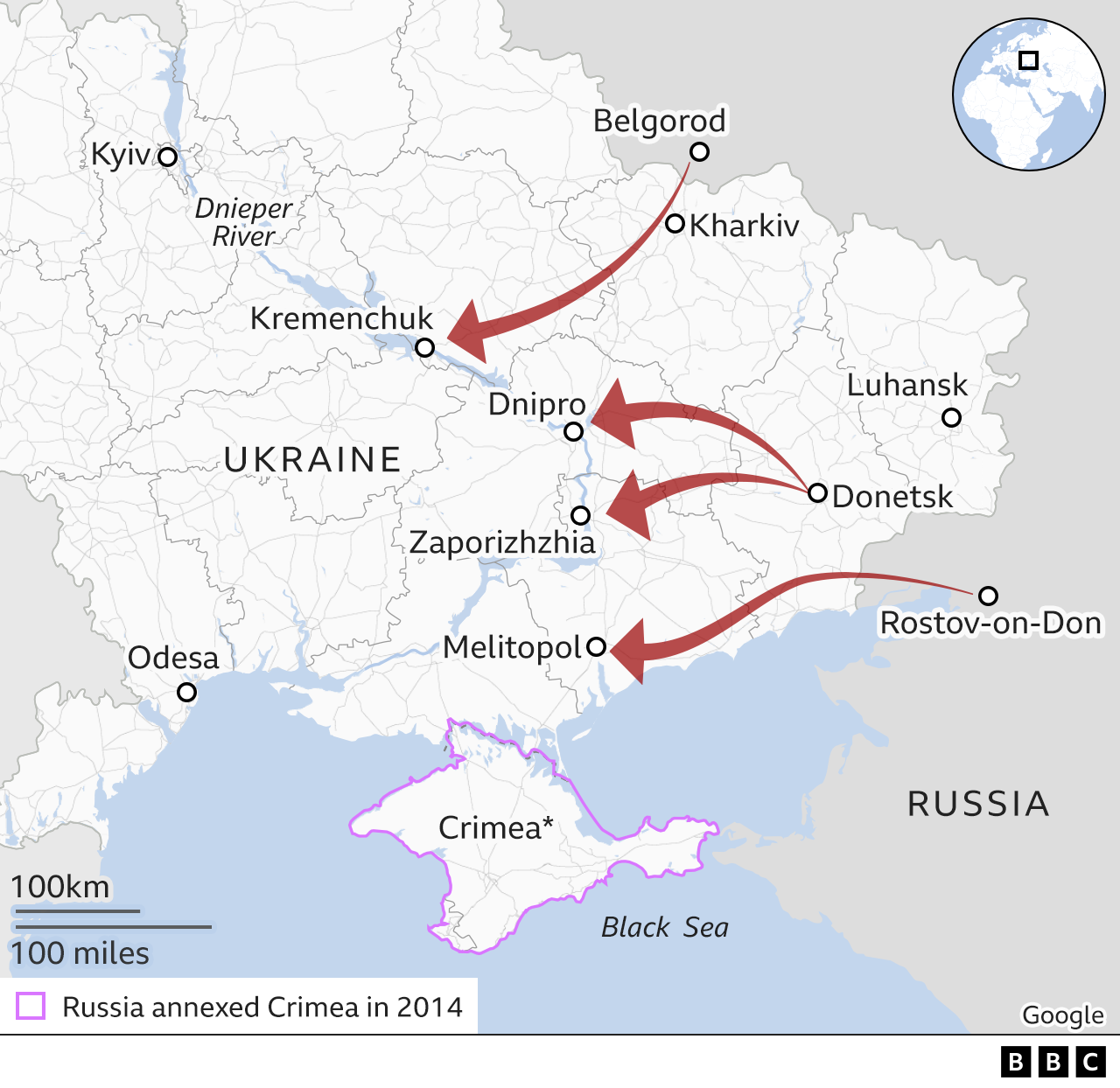
A strike from the east could be initiated simply to protect Russian speakers in the rebel-held areas.
Mr Barry points out that even a limited operation is likely to involve the bombing of air defences and other key military command infrastructure elsewhere in the country.
Analysts emphasise that it's possible that any Russian advance could involve a number of routes simultaneously, allied to cyber-attacks, disinformation warfare and missile strikes.
They say Russia's most limited option might be to launch significant cyber-attacks on Ukraine, aiming to paralyse key infrastructure without taking territory.
In the end, says Mr Kofman, the exact details of any attack will depend on Moscow's political objectives.
And they remain unclear.



No comments